List of Some Tomato Varieties Resistant to Nematodes
Okiedawn OK Zone 7
13 years ago
Featured Answer
Sort by:Oldest
Comments (8)
p_mac
13 years agolast modified: 9 years agojcheckers
13 years agolast modified: 9 years agoRelated Discussions
Grafting Tomatoes onto Roorstocks For Nematode Resistance?
Comments (10)Gary, I knew if anything was going on in the research world in our state, you'd know about it. I look forward to seeing the results from the Kerr Center's research. Carol, I knew that grafting robots existed, but had never seen one. Wasn't that amazing? Now, if only they'd create a robot we all could afford that would travel up and down the rows of our gardens pulling weeds. Jay, I figured in anyone in the heirloom tomato world was experimenting with grafting, you'd know who it was and what they were doing and what results they were seeing. I don't think nematodes will survive your cold winter temps? And, I certainly hope we are right in believing that. I, too, would assume your nematode-infested plant was infested when you bought it. I've always wondered if nematodes could be brought into a garden in infested seedlings, and I guess they can. It probably wouldn't have happened in "the old days" when we were kids and soil fumigants were used so much more than they are today (and even in some home gardens back then). Jo, First of all, hooray for the rain! We had a very light sprinkle here early this morning but not the heavier rain that some of y'all have had sometime since midnight. I have toyed with the idea of grafting for a couple of years, but haven't had a real reason to try it, other than curiosity. As I was thinking about your nematode issue there, I finally asked myself what I would do if I had nematodes in my soil, and the quick answer was that first I'd grow in containers but then, secondly, that I'd try grafting so I could grow endless numbers of varieties without spending a king's ransom to fill up 100 to 200 very large containers. I was trying to think of an easy way to make a chamber that would be high humidity for those first few days and I came across a thread on the Tomato Forum where one of the posters used an aquarium placed upside down over the young grafts and just lifted it a few times a day to mist for humidity. We have one of DS's old aquariums in the garage, so that would work for me. I think I'd leave the aquarium upright and put either a plexiglass or plastic sheeting cover over the top of it because I'm such a klutz that I'd likely drop the aquarium onto the grafted plants and smash them all to smithereens if I had to lift it several times a day in order to mist the air. Dawn Here is a link that might be useful: Grafting Tomatoes...See MoreBest heat resistant tomato varieties?
Comments (21)I have been growing (or attempting to grow) tomatoes in Tucson for many years now. My philosophy with tomatoes is grow sandwich sized tomatoes of good taste and heavy production on disease/heat resistant plants. I have tried Super Souix, Porter, and others with minimal success. The problem tends to be that the plants get very big without much fruit set before or after the main heat of the season. My experience has been that the bulk of my food production from tomatoes has been from varieties that are referred to as semi-determinate (tomato varieties that are determinate in size, but indeterminate in fruit production). The best tomato I have grown in this class has been the F1 Celebrity. It is very easy to come by and does very well with only a little west-side shade after the month of May. 6-12 of these plants will feed a family of 4-6 with tomato sandwiches all through the summer. (As a note I do not use shade cloth and plant my tomatoes FAR from structures such as houses or walls that radiate heat at night). Many heirloom and other open pollinated varieties of tomatoes can produce very nice foliage here in the desert but they often fail to produce any significant amount of fruit. After trialing multiple open-pollinated tomato varieties each year, the best open-pollinated variety I have ever grown that tolerates the heat has been Siletz (see the link below). This variety is parthenocarpic, so it will produce virgin fruit through the summer, then, from my experience, you will be lucky if you can get some seeds from the plant in the fall. (= Neptune is also another good variety but it is a classic determinate, meaning it produces only one crop before its demise. No matter what tomato I grow, the biggest key to growing tomatoes in a desert climate is to put them in the ground or have some kind of insulated container with a water reservoir. Once the plants are established you must wean yourself from the tendency to water every day. Gardeners who water (at most) once every 3 days have much more success than those who water every day. Though this is initially counter-intuitive, flood irrigating or watering for 2+ hours on a drip hose every 3 days enables the roots of the tomatoes to develop 18-24 inches below the surface of the ground where they are well insulated from the scorching summer heat. The main benefit from watering occasionally comes in less plant stress and consequently, much less disease and pest problems. If you are new to this area you might also note some of the considerations to growing tomatoes in the following blog post: http://scientificgardener.blogspot.com/2012/01/few-tips-for-growing-tomatoes-tucson.html Here is a link that might be useful: Siletz tomato trial...See MoreLists of resistant tomatoes
Comments (10)It's a wonder that nobody has developed a variety that does well when these diseases are present. I expect that someday GMOs will show up that are resistant. Not 100% sure I want them, though! LOL ***** Sandy, it has nada to do with GMOs. What it's all about is the inability to ID and isolate the genes responsible for so many of the diseases. Do you have any idea how long both Dr. Randy Gardner and Dr. Tom Zitter, both worldwide known tomato folks have been trying to develop varieties tolerant to Early Blight which is the most common foliage disease in the world? So far nothing much except what I mentioned above re spray schedules.. So if a gene, or genes, responsible for imparting resistance/tolerance to a specific disease can't be IDed, you don't have to worry about anyone developing any GMO varieties. There were two GMO varieties developed quite a few years back, one was Flvr Saver and I forget the other one, but neither one had to do with disease and both were complete failures. I don't see GMO tomato varieties appearing any time soon when conventional breeding is probably still the best way to go once the relavant genes can be IDed. Just My opinion. Carolyn...See Moretomato...rkn resistant varieties???
Comments (16)A thick layer of a light colored organic mulch could potentially reduce solar radiation and keep soil temps down into a range where Mi is more effective. Some OP's (there are numerous OP processing types with N) Amex VFN Anahu (Univ Hi) Andino Atkinson Calmart Crown Bee (Aussie variety) Dona Feista Healani (Univ Hi) Moneymaker Select Monita (derived from Moneymaker) Motabo (derived from Moneymaker) Mossol (derived from Moneymaker) Motelle (derived from Moneymaker) Motac (derived from Moneymaker) Nemared Nematex Peto 343 Puunu (Univ Hi) Ronita (France) Sunburst Super Marzano VFN-8 (UCD introductions) VFN BUSH VFNT Cherry remember also any de-hybridized line will have a 50% chance for having some resistance - select the resistant ones and you can develop a line. Since it is a dominate gene one must do so for at least 6 generations. there is also another "trick" or marker that can help one narrow down the gene's presence but I cant give away all the good secrets The gene is not present in the nematodes, so how can there be isolated populations of nematodes where tolerance might break down when they don't even have the gene? Carolyn is really just not getting Overman's point. which is kinda funny since she's a PhD in microbiology and should understand the reasoning to changes in populations: SO I'll try again the point is REALLY simple. It isnt the Mi gene that changes. It's the nematode population that changes. Here are similar examples. I am sure you know of antibiotics that no longer work on strep strains. So it is not the host or antibiotic that has somehow changed. But I suspect in this case you know it is the strep which has changed into a new strain overcoming the ability for the antibiotic to work. When a pathogen overcomes the ability of a chemical spray to work what changes? It isn't certainly isn't the chemical and in a generation or two it isn't the host(s). It's the pathogen itself which adapts and changes to the conditions it finds itself in just like the strep example above. Another relevant example with another pathogens of tomato would be with late blight. LB in some instances has changed (through selection pressure) and Ridomil no longer is an effective spray in these situations. It wasn't the Ridomil nor the tomato variety(ies) which changed so quickly as you seem to be implying. It was the pathogen itself. So Overman is implying that isolated nematode populations can adapt, through selection, mutation or both to overcome the host's Mi genetic resistance. Mi confers resistance but it is limited to the environment it finds itself....See Morejoellenh
13 years agolast modified: 9 years agoelkwc
13 years agolast modified: 9 years agoOkiedawn OK Zone 7
13 years agolast modified: 9 years agoelkwc
13 years agolast modified: 9 years agoklo1
13 years agolast modified: 9 years ago
Related Stories
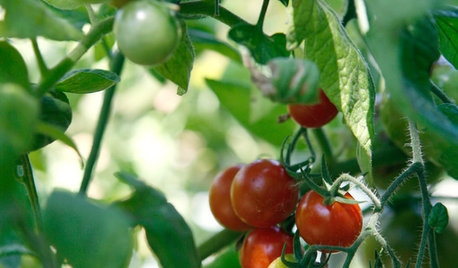
EDIBLE GARDENSSummer Crops: How to Grow Tomatoes
Plant tomato seedlings in spring for one of the best tastes of summer, fresh from your backyard
Full Story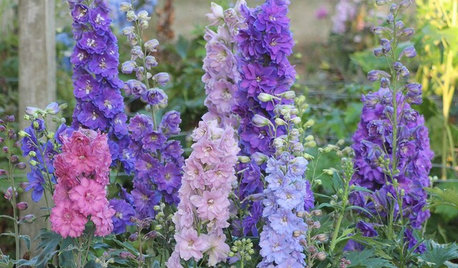
GARDENING GUIDES6 New Plant Varieties That Beat Out Their Parents
With better resistance and fewer demands, these garden beauties are worth a spot on your wish list
Full Story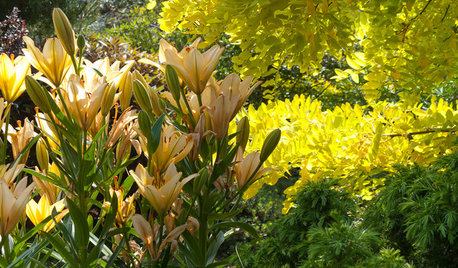
GARDENING GUIDESGreat Garden Combo: 3 Wonderful Plants for a Deer-Resistant Screen
Protect your privacy and keep deer at bay with a planting trio that turns a problem garden area into a highlight
Full Story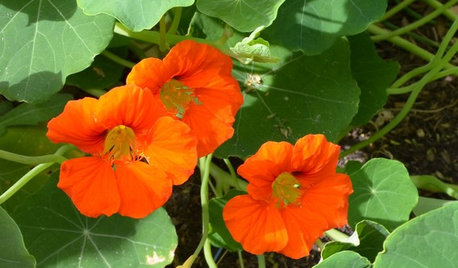
CONTAINER GARDENS7 Deer-Resistant Flowers for Your Summer Containers
Grow these as protection for edibles or just for their colorful beauty — deer might not like them, but everyone else will
Full Story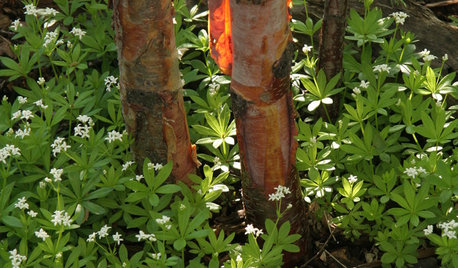
GARDENING GUIDES6 Deer-Resistant Ground Covers to Plant This Fall
Learn about some of the only low, spreading plants that are reliably deer-resistant
Full Story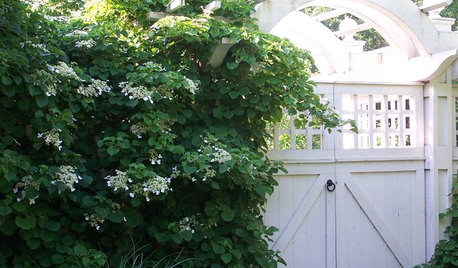
FALL GARDENING6 Deer-Resistant Flowering Vines to Plant This Fall
Have a major deer problem? Here are some of the only vines that have a chance of not being eaten
Full Story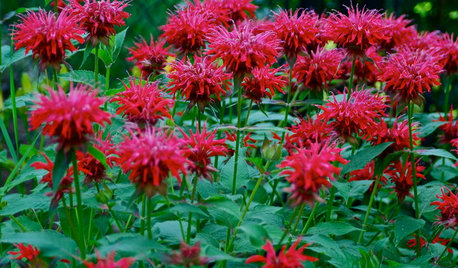
GARDENING GUIDES10 Deer-Resistant Native Flowers to Plant This Fall
Learn about natives that embrace some kinds of wildlife but resist grazing deer
Full Story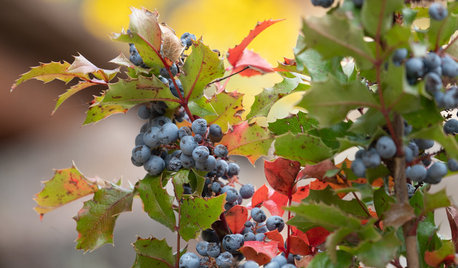
GARDENING GUIDES8 Deer-Resistant Elegant Evergreen Shrubs to Plant This Fall
Who knew that such beautiful shrubs could be deer-resistant?
Full Story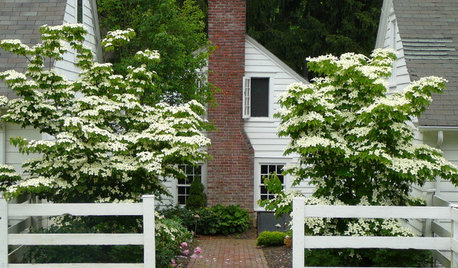
TREES7 Deer-Resistant Flowering Trees to Plant this Fall
If you live in a neighborhood with roaming deer, consider these beautiful trees that won't tempt hungry guests
Full Story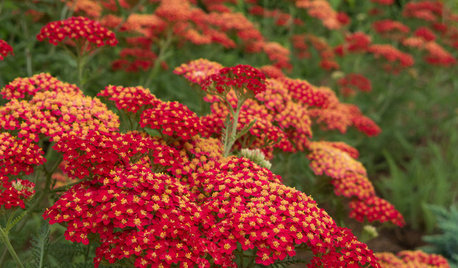
GARDENING GUIDESTop 12 Summer-Blooming Perennials for Deer-Resistant Drama
Can you have garden color, fragrance and exciting foliage with hungry deer afoot? These beauties say yes
Full Story


Baby G (USDA:10a, Sunset:21&23 SoCal-NE. Mt Washington, Lo-Chill: 200-400 Hrs, So